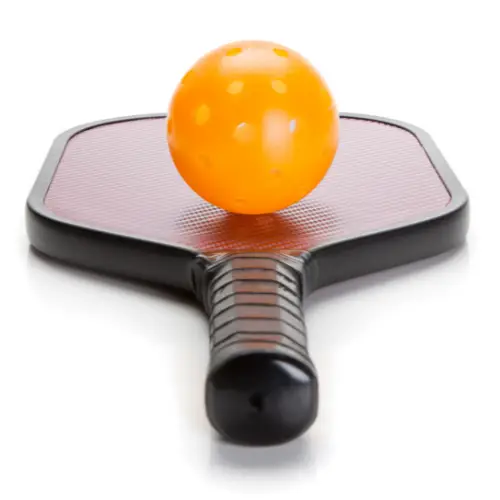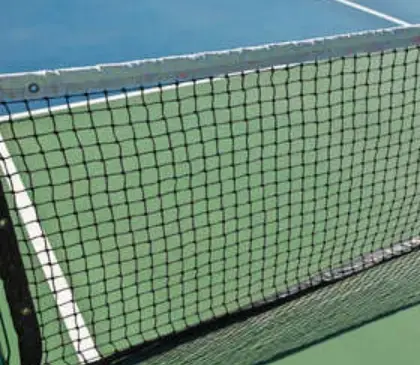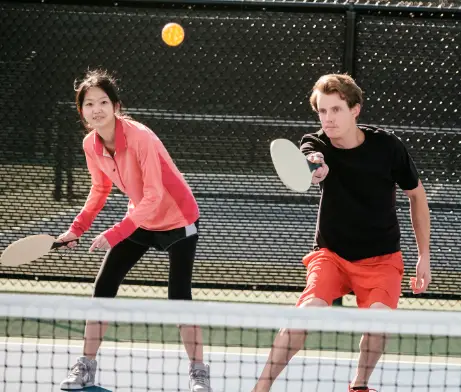In several paddle or racquet sports, including pickleball, volleying is a common motion. Experienced players may have mentioned volleys to you while you were watching them, and you most likely saw one in action without realizing it. I’m going to explain the phrase for you because they are one of the most well-liked yet challenging shots in the game nowadays.
When you return the ball to your opponent’s side of the court in pickleball, you are performing a volley. After every service, you must allow the ball to bounce once on each side in order to volley. Additionally, you must keep both of your feet outside the NVZ (non-volley zone).
When Should You Volley In Pickleball?
The volley is a great shot or pickleball tool to have on hand. Since more points are gained and lost at the net during volley play, being always ready to volley will put you in a position to score more points.
Once the two-bounce rule has been used, it’s not uncommon for a pickleball match to develop into a fast-paced back-and-forth volley game. Click here for a brief explanation of the two-bounce rule.
But if you hit it too high, make sure your opponent doesn’t do an overhead smash.
So, when in a pickleball match should you attempt to volley?
- The most important piece of pickleball advice is to volley whenever your opponent hits a dink over the net when you are at the kitchen line. If you can make any shot, even their dink, without allowing the ball to bounce, you should. If you can catch the ball for a volley before it bounces, do it!
- A volley is a great move if you want to draw your opponent closer to the goal. The majority of athletes volley directly outside the non-volley zone (NVZ). If you start volleying often, your opponent is much more likely to move closer to the net because it is difficult to volley from the back of the court.
- if you want to manage the game’s tempo. Volleying is a useful technique for accelerating the tempo of the game at the net. The majority of volleys at the net are rapid shots directed at your opponent’s feet or torso, necessitating a challenging return.
- To lessen erratic play, you can also volley. Short, light volleying lets you somewhat slow the game down if someone is sprinting and slamming the ball everywhere.
- You’ll rapidly gauge your opponent’s skill level when you choose to volley, especially at the net. Rapid reflexes and a lot of paddle speed are needed to bang volleys back and forth. You have discovered a weakness in your opponent’s strategy if they are unable to keep up.
What Are the Types of Pickleball Volleys?
There are some volley varieties that are more effective than others in that situation given the various tactics for positioning the volley. There isn’t a volley that is perfect for every circumstance and should be used in everyone. Instead, how you position yourself on the court, how high the ball is in relation to the net, and what you’re trying to accomplish with the volley all affect the type of volley you perform.
- Punch Volleys
The most typical kind of volley is a punch volley. A punch volley is often launched forward with a paddle face perpendicular to the court, maybe slightly open. This kind of volley is struck by stretching the arm from the elbow, effectively employing the elbow as a hinge. Your wrist should remain strong during punch volleys, or throughout any volleys for that matter, and your body should remain “cool.”
When the ball is at a medium height, a punch volley is a fantastic alternative for hitting volleys toward your opponent’s feet or through a gap (not below the net nor too high).
- Roll Volleys
When your contact point would be below the height of the net and when your opponents are positioned in their own backcourt, roll volleys—topspin half-swinging volleys—are most effectively completed. This typically happens following an opponent’s drop shot or third shot drop attempt. Roll volleys are the best shot choice when you want to keep your opponents tied to the baseline since they are done with a low-to-high swing path.
- Drop Volleys
The block volley or reset volley are other common names for the drop volley. The drop volley is particularly successful when you want to “reset” the point by softly bouncing the ball over the net while your opponents are hammering the ball at you. A soft grip and the capacity to “absorb” the approaching ball’s velocity are necessary for drop volleys.
- Dink Volley / Volley Dink
The act of volleying a dink shot into your opponent’s non-volley zone while positioned at the non-volley line is known as a dink volley (or volley dink). Before the ball bounces, it is blocked, pushed, or lifted to complete the move. You can avoid retiring from the non-volley line by intercepting an opponent’s dink shot, and it also offers your opponent less time to prepare and respond.
How To Perfect Your Volley In Pickleball
Pickleball uses a variety of volleys, such as reactive, push, dink, roll, and catch volleys. Make sure you are familiar with the appropriate move for the situation because each move has different applications.
In response to a quick hit, a reactive volley is a straightforward tap. Push volleys allow you to forcefully direct and drive the ball to a certain area of the court. In roll volleys, the ball is rotated to fall with either topspin or backspin.
Capture volleys provide you the chance to briefly catch the ball on the paddle face and slow down the shot. In light of this, let’s talk about how you can make every volley better:
- You can control the ball’s direction. Unless you’re conducting a reactive volley, you can try to influence the trajectory and force as much as possible. When you volley, think about hitting the ball close, far, left, or right.
- Varying the tempo of the ball by receiving hard-hit strokes back from the other team. As you’re at the kitchen line, have someone lob shots at you while you practice volleys that slow the ball down.
- Any kind of volley should be aimed at your opponents when playing doubles. As a result, they must choose whose ball it is, which usually results in a point for you.
- Don’t extend your arm too far. It is best to cease swinging after your arm is comfortably extended without locking your elbow because overextension will restrict your control. Additionally, if you’re attempting a reactionary volley, try not to flick your wrist too much.
- Understand the distinction between a gentle and heavy hit. A light strike will keep your opponent near the goal, whilst a heavy hit will send the ball flying. Keep in mind that light strikes might lead to a catch or roll volley, so be ready for anything.
- Before volleying in pickleball, plant your feet. As you may expect, the main point of the motion is your feet. It’s quite challenging to play volleyball while sprinting or on one leg. Before tapping or rolling the ball back to the other side of the court, try to maintain a stable stance.
- Practice makes perfect. Try every volley to increase your range of movement. You’ll be more unpredictable on the court the more movements you are familiar with.
Conclusion
Whether you’re playing solo or doubles, volleyball is crucial. Because you are receiving the ball quickly, your opponent will not have as much time to prepare for your shot, and you can frequently reach higher contact points with a volley, allowing you to knock down into their court.
Because of these advantages, learning how to volley properly can help you get better and ought to help you win more pickleball matches.







